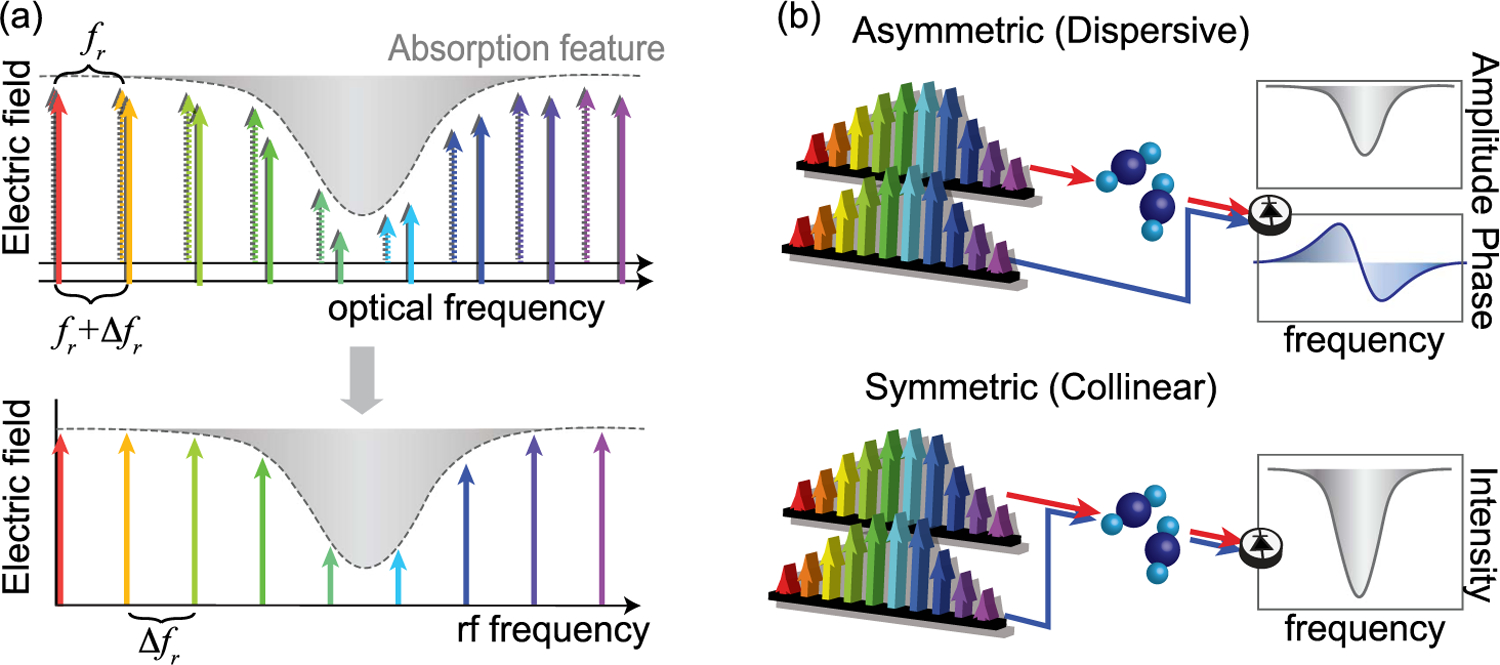Fig. 1.

(a) Simple DCS concept. Two combs with repetition rates fr and fr + Δfr are mixed and detected by a single photoreceiver. As a result of the comb structure, each pair of optical teeth yields an rf heterodyne signal at a unique rf frequency. These rf frequencies form an rf comb of spacing Δfr. The rf teeth can be tightly packed such that >105 comb teeth can be observed simultaneously. For much of the original DCS work, fr was typically ∼100 MHz and Δfr was 100 Hz to 1 kHz, but these values can vary considerably across different frequency comb sources. (b) For spectroscopy, either one or both combs are passed through the sample. The resulting absorption (or phase shifts) on the comb teeth is encoded onto the corresponding amplitude (or phase) of the measured rf comb teeth.
